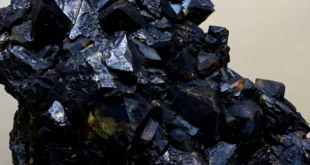At their January summit, US President Joe Biden and Japan’s Prime Minister Fumio Kishida , reiterated their resolve to thwart China’s “attempt to change the ‘status quo’ in the East China Sea.” For the U.S. this is blatantly disingenuous and hypocritical because it is doing the same thing in the South China Sea. It also begs the questions of what is—or was– the status quo, who gets to define it, and who has changed it or tried to do so?
Japan presently administers the rocks it calls the Senkakus. But they are also actively claimed as the Diaoyu Dao by China which has since 2019 increased deployment of its coast guard vessels in Japan’s claimed 12 nautical mile (nm) territorial seas around the features. The narrative in Japan is that the Senkakus have always belonged to it and that China is trying to change the status quo by coercion. But China’s narrative is that they are historically a part of China; that Japan used force to acquire them; and that they should be returned to it.
Indeed, from China’s perspective it is Japan that changed the status quo in 2012 by purchasing them from their private owners thus ‘nationalizing’ them and then excluding China’s fishing boats and coast guard vessels from what China considers to be its rightful waters.
China justifies its vessels’ presence by saying that the features are its “inherent territory”; that Japanese boats are fishing illegally in China’s claimed territorial seas; and that China is demonstrating legal non acquiescence to Japan’s claims.
Demonstration of non-acquiescence is the same argument that the U.S. uses to justify its increasingly frequent and provocative Freedom of Navigation Operations (FONOPs) in the South China Sea. Its FONOPs use top of the line warships to challenge China’s claims of sovereignty over low-tide features like Mischief and Subi Reefs, as well as its territorial sea regime requiring prior permission for entrance of military vessels, and its baselines enclosing features it claims in the South China Sea. Indeed, the U.S. often uses ‘gunboat diplomacy’ aka ‘threat of use of force’ to assert its unilateral interpretations of provisions in the UN Convention on the Law of the Sea (UNCLOS) that it has not ratified.
Although no country should acquiesce to claims that it considers illegal, such non-acquiescence can be effectively and sufficiently demonstrated by verbal and written diplomatic communiqués. Indeed, diplomatic protest rather than ‘gunboat diplomacy’ is more consonant with the UN Charter that requires that “[a] Members shall settle their international disputes by peaceful means in such a manner that international peace and security, and justice, are not endangered.”
In China’s view – as well as in the perspective of several Southeast Asian countries – the U.S. has also changed the status quo in the South China Sea by provocatively “projecting power” there. As China’s Deputy Foreign Minister Liu Zhenmin has said, “This has gone beyond the scope of freedom of navigation. It is a political provocation.”
The U.S. has certainly stepped up its military operations in the disputed South China Sea . The epitome of US power projection–air craft carrier strike groups– entered the area nine times in 2021; there are two there right now.
The disputes in the East China Sea and the South China Sea are quite different politically –at least from China’s perspective. Most galling to China is that Japan even denies there is any dispute over sovereignty to the disputed rocks in the East China Sea.
This is contrary to the U.S. position that does not recognize Japanese sovereignty over the rocks. Indeed, the U.S. takes no position on the question of who has sovereignty over the Senkakus. However it maintains—even proclaims– that the 1960 U.S.-Japan Security Treaty covers the rocks. US Secretary of Defense Lloyd Austin has reaffirmed the application of the Treaty to the Senkakus and added that “[T]he United States opposes unilateral moves to change the status quo” apparently meaning Japan’s administration thereof.
But this raises the question of just what is the status quo? Indeed, China has stated that “it has never recognized the so-called ‘status quo’ of Diaoyu Dao and some Nansha features that were illegally seized and occupied by other countries”. Vietnam claims that its “construction and embellishment [of its occupied features in the South China Sea] do not change the status quo.” So what does constitute a change in status quo? Are incursions by Vietnamese fishing boats into China’s claimed waters around the Paracels a violation of the status quo—that is China’s administration of the features and their maritime jurisdictional zones?
Defining the status quo in the South China Sea is very complicated. To begin with, the status quo of what and from when—occupations of rocks, construction on or militarization of those rocks, claims and assertions of resource rights and related activities, or control over maritime space? All have been in flux for some time—and still are.
In 2013, then US PACOM Commander Samuel Locklear tried to clarify the US position by stating “We will oppose the change of status quo by force by anyone” –although it has only denounced China for doing so. But what is “use of force’ or the threat thereof? Does this include unilateral drilling backed by gunboats, arrest and detention of fishing boats, and old-fashioned gunboat diplomacy that the US and others frequently use in the South China Sea? Does the arrival in theater of an aircraft carrier strike group alter the status quo?
Actions that deviate from the US preferred ‘international order’ do not necessarily violate international law –as long as they are not coercive. China might argue that its use of maritime militia and survey vessels in the South China Sea –even protected by coast guard vessels– is only a demonstration of its claims and not coercion.
In the East China Sea, China thinks it has been relatively restrained regarding the overlapping maritime claims and has tried to avoid a clash. It has agreed to share fish stocks in most of the disputed area and has also agreed in principle to joint development of hydrocarbons in the central East China Sea, although implementation has hit roadblocks. Moreover the two have established a mutual ‘prior notification’ regime for scientific research in the disputed maritime area.
Given this network of arrangements, a “code of conduct” governing their behavior in the disputed area would be a natural next step. The definition of the status quo and the use of force should be included.
At the least the U.S., Japan and China should specify their definitions and refrain from disingenuous and hypocritical accusations.
 Eurasia Press & News
Eurasia Press & News




